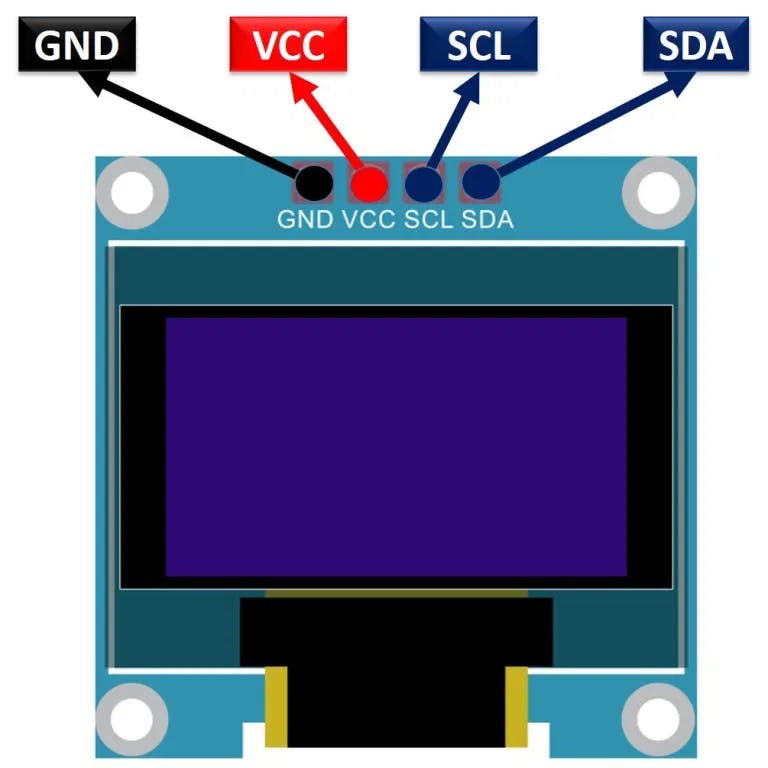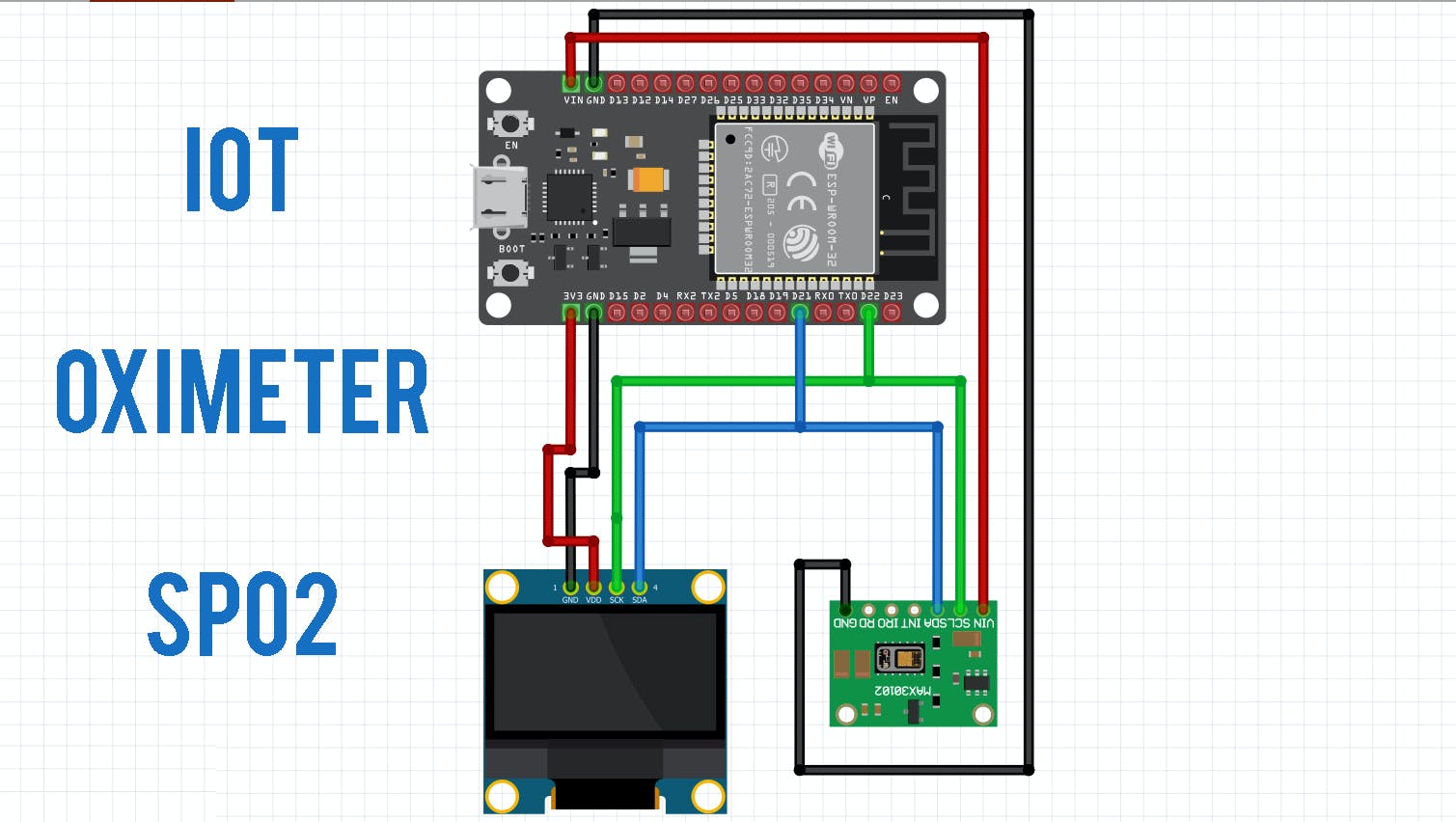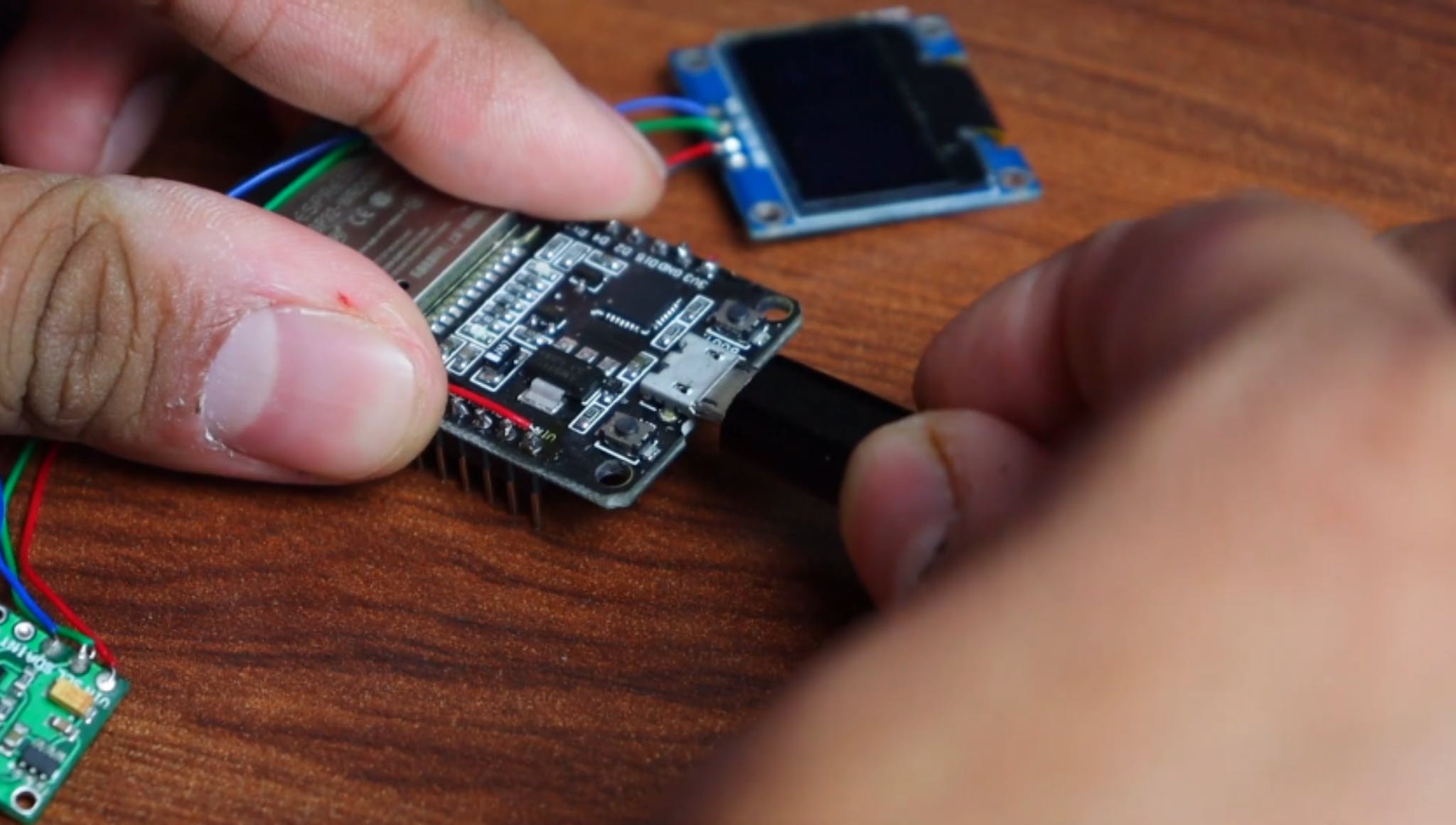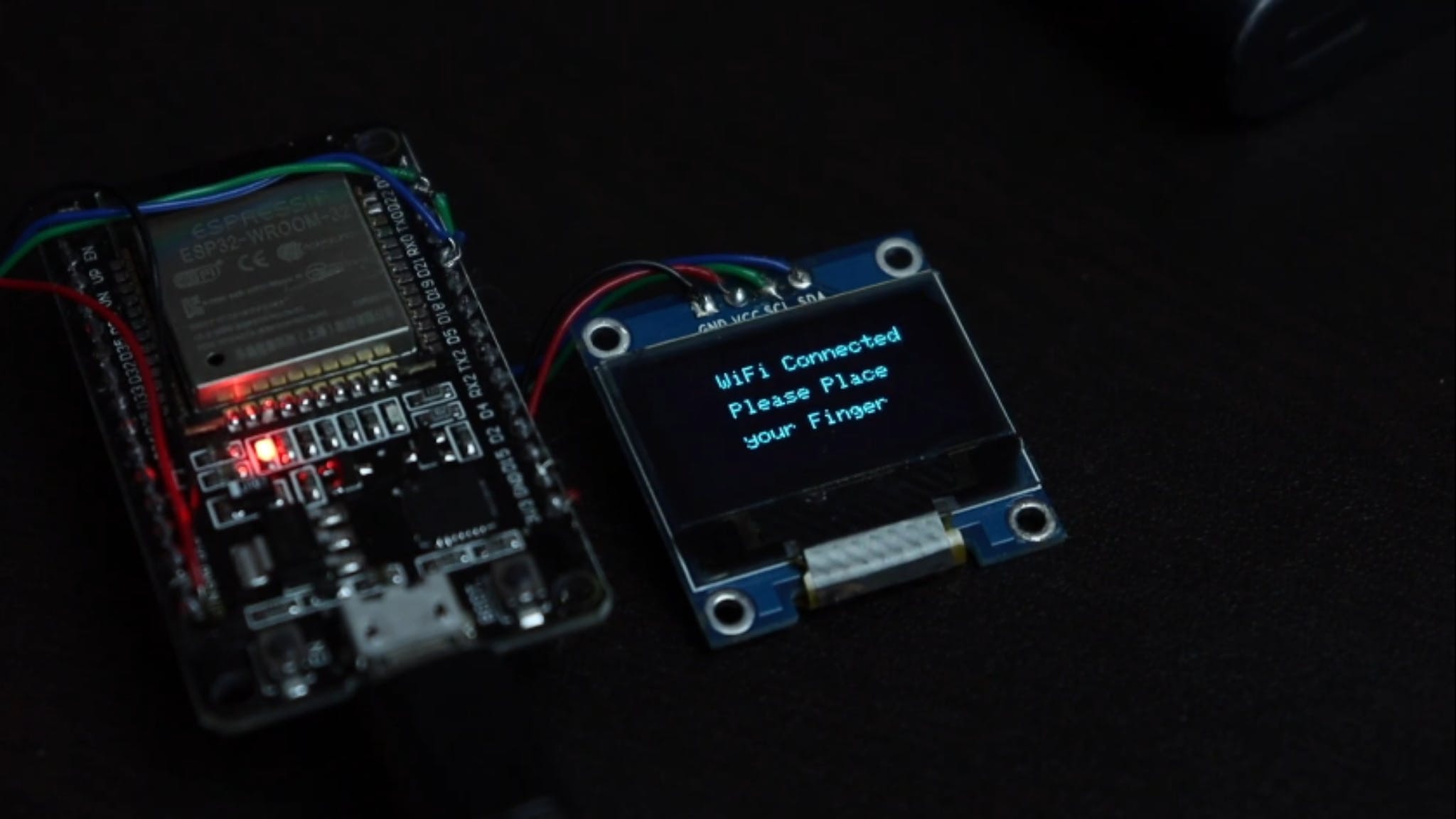资料介绍
描述
在这个项目中,我将向您展示如何使用 ESP32、MAX30100 和 Blynk 应用程序制作基于物联网的脉搏血氧仪。我们可以使用 Blynk 物联网云平台从世界任何地方监控这些值。
由于有可用的在线数据,因此该项目可用于在线监测患者的健康状况。
市场上的脉搏血氧仪非常昂贵,但有了这个简单且低成本的脉搏血氧仪模块,我们就可以制作自己的设备。因此,让我们学习如何使用 ESP32 制作 MAX30100 脉搏血氧仪。
第 1 步:所需组件。
要制作这款基于物联网的脉搏血氧仪,您需要很少的组件您可以从亚马逊链接 (AFFILIATE LINK)ESP32 X1 _____________________________印度 /Amazon.com购买所有这些组件
OLED 显示屏 X1 ______________________________印度 / Amazon.com脉搏血氧计传感器 X1 _________________________印度 /Amazon.com 3D 打印盒 X1
只需收集上述所有组件。
第 2 步:MAX30100 脉搏血氧计传感器的工作。
该传感器有两个 LED,一个发出红光,另一个发出红外光。脉率需要红外线。但是,测量血液中的 SpO2 水平需要红光和红外光。
当心脏泵血时,氧气水平会增加,因为有更多的血液。但是,当心脏休息时,含氧血液会减少。因此,脉率是通过获得含氧血液上升和下降之间的时间来确定的。
含氧血液吸收更多的红外光并通过更多的红光。但是,脱氧血液会吸收红光并通过更多的红外光。
基本上,MAX30100 传感器读取两个光源的吸收水平并将它们存储在可通过 I2C 引脚读取的缓冲区中。
第 3 步:0.96 英寸 I2C OLED 显示屏。
在显示模块中,我们将使用 0.96 英寸蓝色 OLED 显示模块。
我们可以轻松地将该模块与任何使用 SPI/I2C 协议的微控制器连接。
显示器的分辨率为 128×64。
I2C OLED 显示屏

OLED代表有机发光二极管。它是一种自发光技术,由放置在阳极和阴极之间的微小多层有机薄膜组成。
与 LCD 技术不同,OLED 不需要背光。
OLED对于所有类型的显示器都具有很高的应用潜力。OLED 也被认为是下一代平板显示器的终极技术
第 4 步:连接 MAX30100 脉搏血氧仪与 ESP32。

该物联网脉搏血氧仪的电路组件非常简单。
OLED 显示屏和 MAX30100 血氧计传感器均可与 I2C 配合使用。因此,将两个模块的 I2C 引脚(SCL 和 SDA)与 ESP32 的 D21 和 D22 引脚连接。
同样,为 VCC 提供 3.3V 电源并将两个传感器的 GND 引脚接地。基本上,您可以按照电路图进行连接。
我不会讲太多细节,我已经在我们的博客上写了一些信息。
5:为物联网脉搏血氧仪设置 Blynk 应用程序
现在从适用于 Android 和 iOS 的 Play 商店/应用商店下载此 Blink 应用程序。
现在,单击新项目为您的项目命名。我让“血氧计”选择 ESP32 开发板和连接类型为 Wi-Fi。然后点击创建。
现在单击“+”号以添加小部件。
我们需要读取 BPM 和 SpO2 的值。因此,选择一对名为 Value Display & Gauge 的小部件。
顺便说一句,您访问我们的网站并从中扫描代码,您将获得一个预制的小部件,这对您来说很容易
单击此处(为 IoT 脉搏血氧计设置 Blynk 应用程序)
第 6 步:软件和库

硬件设置完成,现在我们需要将代码上传到 NodeMCU ESP8266-12E Board。但在此之前,您需要安装一些库。
库文件可以从这里下载:
2. OLED库
4.简单眨眼
第 7 步:编码
/*
## Hardware Connections (ESP32 <- OLED <- MAX 30102):
-VIN = 3.3V
-GND = GND
-SDA = 21 (or SDA)
-SCL = 22 (or SCL)
*/
/*================================================================================================================================== */
char auth[] = "qjZaiBBH26yK40yj29wXwZ8LXOoeQmtR";
char ssid[] = "nextpcb"; // Your WiFi Name (SSID) (**case sensitive).
char pass[] = "111222444" // Your WiFi Password.
/*================================================================================================================================== */
//DiY Projects Lab
#define BLYNK_PRINT Serial
#include //OLED libraries
#include
第 8 步:从 MAX30100 ESP32 输出 Blynk 上的观察值和读取值

在 Android 应用程序上,BPM 和 SpO2 值会在一秒钟后上传,您可以看到仪表和显示参数的变化。
访问我的网站DiY Projects Lab拥有超过 25 个很棒的详细项目
第 9 步:DIY 和购买
我将我的血氧仪与专业血氧仪进行了比较,它显示出几乎 99% 的准确度。
谢谢 NextPCB:这个项目之所以顺利完成,是因为有 NextPCB 的帮助和支持。
伙计们,如果您有 PCB 项目,请访问他们的网站并获得令人兴奋的折扣和优惠券。
1. PCB 订单最高可享受 30% 的折扣
2. PCBA 订单最高 20% 折扣
- 乐鑫ESP32-MINI-1参考设计
- 乐鑫ESP32-MINI-1U参考设计
- 乐鑫ESP32-PICO-V3_技术规格书
- 乐鑫ESP32-PICO-D4_技术规格书
- 乐鑫ESP32-C3-MINI-1参考设计
- 乐鑫ESP32-C3-MINI-1U参考设计
- 乐鑫ESP32-S3-WROOM-2参考设计
- 乐鑫ESP32-S3-WROOM-1U参考设计
- 乐鑫ESP32-DevKitS-V1.1参考设计
- 乐鑫ESP32-PICO-MINI-02参考设计
- 乐鑫ESP32-PICO-MINI-02U参考设计
- 乐鑫ESP32-MeshKit-Light_使用指南
- 乐鑫ESP32-DevKitC-V4参考设计r2.1
- 乐鑫ESP32-MINI-1_&1U技术规格书
- esp32-s3_datasheet
- 基于ESP32-S3的高性能开发板介绍 4789次阅读
- ESP32-C3硬件定时器简介及使用 3258次阅读
- ESP32-C3 WIFI的工作模式 3157次阅读
- 什么是ESP32-CAM摄像头? 1.7w次阅读
- 使用ESP32连接腾讯云实现远程控制 2299次阅读
- 介绍一个使用ESP32模块开发的信息显示器 1740次阅读
- 使用ESP32实现UDP通信的方法 4517次阅读
- ESP8266/ESP32自动下载原理 3483次阅读
- 基于ESP-WROOM-32E专为IoT设计的FireBeetle ESP32-E主控板介绍 3920次阅读
- esp32物联网的应用实例 LoRa网关制作、触屏DIY电视、Sygic导航HUD 4601次阅读
- ESP32的数字遥测实现 1161次阅读
- 如何使用两个舵机为ESP32-CAM创建云台控制 1.1w次阅读
- 如何使用ESP32创建一个气象站 3358次阅读
- 一款基于ESP32的对讲机传输音频介绍 2.2w次阅读
- dfrobotBeetle-ESP32控制器简介 2386次阅读
下载排行
本周
- 1山景DSP芯片AP8248A2数据手册
- 1.06 MB | 532次下载 | 免费
- 2RK3399完整板原理图(支持平板,盒子VR)
- 3.28 MB | 339次下载 | 免费
- 3TC358743XBG评估板参考手册
- 1.36 MB | 330次下载 | 免费
- 4DFM软件使用教程
- 0.84 MB | 295次下载 | 免费
- 5元宇宙深度解析—未来的未来-风口还是泡沫
- 6.40 MB | 227次下载 | 免费
- 6迪文DGUS开发指南
- 31.67 MB | 194次下载 | 免费
- 7元宇宙底层硬件系列报告
- 13.42 MB | 182次下载 | 免费
- 8FP5207XR-G1中文应用手册
- 1.09 MB | 178次下载 | 免费
本月
- 1OrCAD10.5下载OrCAD10.5中文版软件
- 0.00 MB | 234315次下载 | 免费
- 2555集成电路应用800例(新编版)
- 0.00 MB | 33566次下载 | 免费
- 3接口电路图大全
- 未知 | 30323次下载 | 免费
- 4开关电源设计实例指南
- 未知 | 21549次下载 | 免费
- 5电气工程师手册免费下载(新编第二版pdf电子书)
- 0.00 MB | 15349次下载 | 免费
- 6数字电路基础pdf(下载)
- 未知 | 13750次下载 | 免费
- 7电子制作实例集锦 下载
- 未知 | 8113次下载 | 免费
- 8《LED驱动电路设计》 温德尔著
- 0.00 MB | 6656次下载 | 免费
总榜
- 1matlab软件下载入口
- 未知 | 935054次下载 | 免费
- 2protel99se软件下载(可英文版转中文版)
- 78.1 MB | 537798次下载 | 免费
- 3MATLAB 7.1 下载 (含软件介绍)
- 未知 | 420027次下载 | 免费
- 4OrCAD10.5下载OrCAD10.5中文版软件
- 0.00 MB | 234315次下载 | 免费
- 5Altium DXP2002下载入口
- 未知 | 233046次下载 | 免费
- 6电路仿真软件multisim 10.0免费下载
- 340992 | 191187次下载 | 免费
- 7十天学会AVR单片机与C语言视频教程 下载
- 158M | 183279次下载 | 免费
- 8proe5.0野火版下载(中文版免费下载)
- 未知 | 138040次下载 | 免费
 电子发烧友App
电子发烧友App


















 创作
创作 发文章
发文章 发帖
发帖  提问
提问  发资料
发资料 发视频
发视频 上传资料赚积分
上传资料赚积分









评论